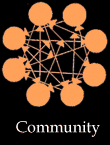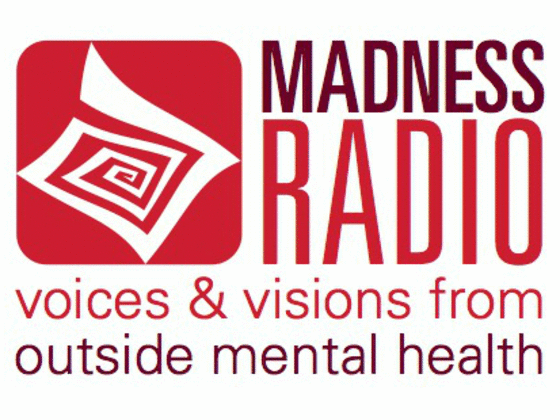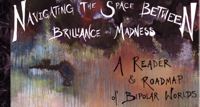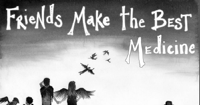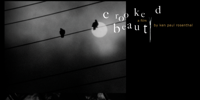Interview with Arnold Mindell: Dreambody Process Work
Submitted by Icarus Project on Wed, 03/14/2007 - 3:20pmFIELD OF DREAMS
~ An Interview with ARNOLD MINDELL by Stephan Bodian
http://www.sonic.net/~billkirn/mindell_interview.html
When I first met Jungian analyst Arnold Mindell several years ago, I thought he might be a bit crazy. As I attempted to interview him over tea, he zigzagged from one topic to another, laughed uproariously, asked me unsettling questions, and otherwise refused to behave like the usual celebrity interviewee. Yet it was not his mercurial hijinks that threw me off guard; it was his warmth, his ingenuous, childlike affection. This strange fellow acted as if he'd known me all his life. Could I be in the presence of some holy sufi fool? I wondered.
As I've spent time with him over the years, I've come to appreciate the method (and the wisdom) in Mindell's madness. In fact, he is a psychologist with impeccable credentials, including experience as a training analyst at the Jung Institute in Zurich. He is also author of half a dozen books and founder of his own training centre, the Research Society for Process-Oriented Psychology. What he has added to Jung's understanding of unconconscious process is the notion of the "dreambody" -- the unconscious as an active agent constantly expressing itself in our lives.
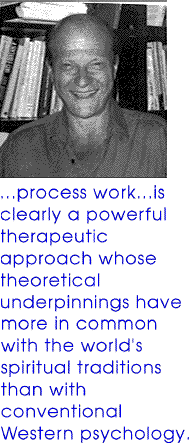
- Rather than a repository of archetypes, as Jung had suggested, the unconscious, or dreambody, according to Mindell, is a dynamic, flowing continuum of which archetypes are only "snapshots". Dreams, physical symptoms, relationships, accidents, altered states of consciousness -- all are manifestations of the dreambody in action.
In particular, Mindell has developed a complex methodology for revealing the deeper meaning of bodily processes: feelings, pains, habitual gestures, even chronic illnesses. Whereas some therapies or meditation techniques attempt to eliminate or ignore these processes, especially the ones considered negative or undesirable, Mindell's approach is to amplify and follow them until they reveal their hidden messages. Indeed, his belief in the underlying meaning of all things human has given him the courage to work successfully with situations and states of mind that most therapists would consider unworkable, including intense interpersonal conflict, violent convulsions, catatonia, even mental retardation and coma. Two of his books, Coma: Key to Awakening (Shambhala) and City Shadows: Psychological Interventions in Psychiatry (Routledge), feature extraordinary case examples of this work.
A short, wiry man with a mischievous smile, Mindell brings to a client's process the energy and attentiveness of a martial arts master, the curiosity of a scientist, and the empathy of an intimate friend. During a demonstration recently, I watched as he deftly took one woman from talk about her symptom - frequent urination - through a series of interactive, dancelike movements to a visionary experience in a scant 20 minutes. Since most of us in the West, according to Mindell, have suppressed our innate tendency to express ourselves in movement, his work with clients often shifts from words to kinesthetic expression. The directors of California's famed Esalen Institute were so impressed with process-oriented psychology that they hired Mindell to teach it to their staff.
The story of Mindell's initiation into the world of Jungian psychology reads like a chapter from one of his own books on dreambody phenomena. After studying both languages and science in college, Mindell, a native of New York State, did graduate work in physics at M.I.T., and then transferred to the Ph.D. program at the University of Zurich. He soon found physics "too dry", however, and when he began having "wild dreams" a fellow student referred him to the "old witch" of Zurich. This turned out to be Marie-Louise von Franz, one of Jung's foremost successors and an expert in dream interpretation. As it happened, Jung had died just a few days earlier, intimating, on his deathbed, that the next step in Jungian psychology would be to explore its connection with physics!
Mindell and von Franz explored the problem of synchronicity together, and Mindell ended up getting a Ph.D. in psychology rather than physics and an analyst's diploma from the Jung Institute. Although he was fascinated by Jung's teachings (and still reminds people that his work is just a continuation of Jung's), he brought his scientist's eye for detail and demand for concrete evidence to bear on the therapeutic process. "Just talking about the unconscious wasn't that interesting to me," he says, "I had to see how it operated in real, living people. That's how I eventually got into bodywork. I wanted to see how dreams lived in the body." In particular, his work with terminally ill patients "initiated me into modes of non-verbal communication whose significance I fotherwise would have overlooked."
Like the Taoist philosophers he is fond of refering to, Mindell believes that what happens to us in each moment is exactly what was meant to happen. Our task is to learn to follow this process as it unfolds and thereby help it to reveal its deeper significance. A physical symptom, for example, may force us to deal with a relationship issue, get us in touch with a mythological figure, resolve an old childhood dream, or guide us into a profound meditative state. "I think we're doing what spiritual practices are trying to do as well," Mindell contends. "Long ago I dreamed that the Buddha said that if process work had been available in his day, he would have used it, because it's an express train to the same spot.
Whether or not process work leads to enlightenment, it is clearly a powerful therapeutic approach whose theoretical underpinnings have more in common with the world's spiritual traditions than with conventional Western psychology. In the following interview, conducted on two separate occasions in conference rooms, Arny Mindell discusses the philosophy and practice of process-oriented psychology.
STEPHAN: Arny, in your work as a Jungian analyst, you discovered that the unconscious, the "dreambody", manifests itself not only through dreams but also through other channels. Could you say a little about those elements and what they signify?
ARNOLD: When you talk about the unconscious manufacturing itself through dreams, I think to myself that the unconscious itself is a dreaming process; it's a flow or a river. Dreams are only snapshots of the river. What really began to fascinate me was the dreaming process behind those dreams.
STEPHAN:Whereas traditional Jungians generally become fixated on the photograph.
ARNOLD:Yes. Many Jungians look at the river and talk about archetypes, and then they start to do this funny thing. They say, "Well, if yoiu analyze and interpret one archetype, it has a tendency to flow into another archetype. Way down deep there is a smudging of archetypes." What they are really saying is that there's a flowing or dreaming process at the bottom of it all.
This process manifests itself in many different ways, depending on the channel in which we perceive it. One of the channels is proprioception -- you feel things inside your body in terms of temperatures, pressures, pains, aches, joys, sexual stimulation, and so forth. Or you experience things in terms of visual imagery, or in terms of auditory phenomena, like voices, or in terms of movement -- the way you trip over your shoelaces or make certain kinds of gestures -- or even in terms of relationship processes. Other people can act as sensory channels for you; you can experience yourself in terms of the behaviour of others. And the process also manifests itself through extrasensory or parapsychological channels: The trees do things; the sky appeals to us. This is the channel of the American Indians, you might say. The unconscious has many ways of manifesting itself.
STEPHAN: You say that other people in my life are part of my dreaming process. What do you mean by that?
ARNOLD: I mean that we all have a tendency to "dream up" other peole to behave like our dream figures. This causes us to project parts of ourselves onto such people, and it also causes us to choose them as partners so that we can work things out with them. When I say, "So-and-so feels this or that," I may actually be saying that I feel this or that, though I haven't yet identified this person as a channel of awareness in myself.
STEPHAN: How do you work with the different channels? For example, say a person comes in who is troubled by a very sever inner critic that hounds her all the time.
ARNOLD: First of all, the most important thing in working with people is the skill with which you use the other skills, what I call the metaskill. This is the feeling or attitude you have about yourself and others. If you have a compassionate attitude, that in itself generates what you do.
STEPHAN: So you don't simply take some technique and apply it. Rather, it comes from within you in the context of love and caring toward others.
ARNOLD: That's right. When you have a compassionate attitude toward people, you automatically start picking up their feedback and responding to it. Someone with a severe inner critic may start out by saying, "I'm hearing inner criticism all the time." So I might say, "Do you want to listen to it right now?" If she says, "No, I hate it. I hear it all the time," I might respond to her negative feedback by saying, "OK, then let's talk about something else." After a while, she may come back to the criticism, and I'll again suggest going into it. If she gives me positive feedback at this point, I'll have her listen to the inner critic for a while, asking who it is, whether it's a man or a woman, her mother or her husband or her boss, etc.
Then she might say, "Oh, my stomach hurts." Now she's switched to the proprioceptive channel. "What does that feel like?" I might ask. "Well, it feels bad." she says, making a fist at the same time. So we focus on the fist, which is a kinesthetic or movement expression of the same process. Then I might have her amplify the fist by making a muscle in her bicep, tightening her neck, and tensing her face. Suddenly she says, "Now I look like my father." "What does her look like?" I ask. "He looks like you!" At this point, I would probably say, "Can't we take this inward? Does it have to be projected outward? Are you really criticizing me? I think you just don't like me."
STEPHAN: Now you're in the relationship channel
ARNOLD: Exactly. This is what I call "dreaming up", which is relationship work. Then as a therapist I have to look inside myself and see whether a part of me isn't in fact critical of her. There may be, in which case I need to recognize and talk about that part. We may go back and forth until the person realizes that I'm not like her father, but the fatherlike part is in her.
STEPHAN: You have to be quite genuine in these interactions, and aware at many levels -- of what's going on inside you, in the client, and in the environment as well.
ARNOLD: Exactly. I have to be aware of the whole process, because I'm part of the process too.
STEPHAN: What you're referring to here, if I'm not mistaken, is what you call the "dream field", in which people and objects take on the qualities of our dreaming process.
ARNOLD: Yes. We dream up the world around us to behave like our own dream field. All these different parts and roles are present in each of us and in the environment. When we dream something up, we call forth a certain part to play a role in our own evolutionary process. For exammple, if I lack awareness of the shy part of myself, I may dream you up to represent that part, to balance my one-sidedness, and you may dream me up to represent the bold part of you. Then we start experiencing one another as dream figures, as opposites within ourselves. Just by being one-sided or unconscious, we constellate dream fields.
STEPHAN: Freudians might say that you were "transferring" certain qualities of your mother or father onto someone else. Jungians might talk about projecting an archetype.
ARNOLD: Yes, those are just different ways of talking about the same thing, except that sometimes things happen synchronistically that can't be explained in terms of simple projection. For example, you dream that a huge bird speaks to you, and the next day you're walking down the street and for the first time in your life a huge bird actually bumps into you. This is not something you can talk about in terms of simple projection. The world sometimes does literally behave as if it were a sensory channel, as if it were a part of your dreaming field.
STEPHAN: We often call such occurrences coincidences, unless you're suggesting they have meaning.
ARNOLD: Yes. You see, most people think like physicists. They believe that unpredictable occurences are just coincidence or chance. But psychologists and spiritually oriented people realize that the unpredictable, the event that only happens once, is itself very meaningful.
For example, a woman I once worked with had a very sharp pain in her right breast. She was living in Los Angeles at the time, and she discovered later that exactly at the moment she had that pain, her sister in New York died of breast cancer. She herself eventually developed cancer in that breast. So one-time occurrences can be very important.
STEPHAN: What you're proposing has correspondences with Eastern philosophy. For example, the I Ching is very much concerned with one-time occurrences that happen simultaneously. The idea is that there's a field of meaning and that things that happen at the same moment are somehow related in a meaningful way.
ARNOLD: Exactly. That's how the world behaves as a channel. There's really nothing new in what I'm saying. These ideas are implicit, for example, in Taoism. You could say I'm just attempting to learn how to follow the Tao, not just talk about it.
Everyone is a Taoist at heart. Everyone would like to follow nature, but we don't have enough tools yet to put the philosophy into practice. All over the world -- for example, we've just been working in the African bush -- people say they believe in human nature. But as soon as someone gets sick, they fight the illness, rather than trying to find the meaning or purpose behind it. I think they just don't know how yet.
STEPHAN: Say a little more about how you see process work as a kind of Taoism.
ARNOLD: Taoism for me means becoming aware of and following what's actually happening -- both the intentional and the unintentional, the conscious and the unconscious. Process-oriented psychology is simply a way of doing that.
STEPHAN: Most of us can get into harmony with our conscious process, but we don't seem to have the tools to harmonize with our unconscious process. Process-oriented psychology, then, offers a method for coming into harmony with the whole process, both conscious and unconscious.
ARNOLD: That's right. Even present-day Taoists are correcting the body all the time. They say they are trying to get into the Tao by balancing the body. But why balance it? Why not go with the Tao of no-balance? In the I Ching there are conflict hexagrams as well as stagnation hexagrams. The Tao has moments of conflict as well as moments of harmony. Why not get those too?
STEPHAN: In other words, why not allow the conflict to be there, work with it as it is, allow it to unfold.
ARNOLD: That's right. I think, for example, of a woman who came to a seminar we were giving an said she had ruptured discs in her back. She had to be carried in; she was virtually paralyzed. She wondered how we could possibly work with her. We said, "Let's just follow nature. The Way will direct us. Let's see where it takes us." She began to follow her pains and work with her breathing and her body. Very soon she began to move spontaneously. While she was moving, she said, "What shall I do next?" I said, "Let's follow what's actually happening to you." So we followed her breathing, and as I pressed my hands lightly on her rib cage, she suddenly said, "I feel like moving in strange directions." I said, "Well, do it." I helped her to follow her body by using my hands to sculpt it in the directions it was already moving, following her body signals. Pretty soon, of all the impossible things, she began to bend over backward in the yoga pose called the Bridge!
For somebody with ruptured discs, this is miraculous. "It hurts," she said, "but for some reason, this time it feels good." I didn't know what to suggest to her, so I said, "Follow what feels right." She kept going backward and finally said, "My God, I'm being crucified and uplifted." She started to cry, and she had a powerful religious experience. She stayed there for the longest time, arched over backward in a sort of half-bridge position, breathing deeply. Then she bent forward, sat up normally again, and thanked me.
"Does this remind you of a childhood dream?" I asked her. She said the first thing she could remember was that people in UFOs were coming to uplift her. The process of being uplifted was trying all these years to happen to her, and it was manifesting itself in her back. This is an example of following the Tao of the moment.
STEPHAN: What about her back?
ARNOLD: Her back felt immediately better. She sat up without help or support, stood up, smiled, and walked around. She was glowing -- something more important than her backache had happened to her.
I don't know whether the changes held. But I don't consider that as important as the increased awareness, which is what we're working toward. We're not trying to heal people.
STEPHAN: But doesn't "psychotherapist" mean "one who heals the psyche"? How do you conceptualize the healing process?
ARNOLD: The word "healing" implies that someone is sick. I don't usually go along with that metaphor anymore. If people insist on seeing themselves as sick, I appreciate their way of looking at things, and I may even try to heal them. But I consider healing much too limited a concept. I prefer to see disease as a dream trying to come to consciousness. When a person goes into the experience, it's almost never illness, but some intense process trying to happen.
The Vietnamese Buddhist teacher Thich Nhat Hanh says that true understanding comes from putting yourself inside the river. Previous knowledge is a block to understanding. If you think you're sick, that's fine, but it's a block to real understanding. Who knows if you're sick? Who knows what's really happening to you?
STEPHAN: What you're saying, then, is that, despite our own little ideas of how we want things to be, underneath it all, there's this deeper, more universal process needing to happen, through us and through the world. This is what you call the "dreambody".
ARNOLD: Yes, exactly.
STEPHAN: Or it could be called the Tao, or God. All we need to do is tune in.
ARNOLD: Yes. There's really nothing to it. I sometimes feel guilty that I don't do more. I can't believe that these incredible experiences emerge from people as a result of my doing so little. They're just waiting to happen; all we have to do is mother them a little.
STEPHAN: That's where the technique comes in.
ARNOLD: Yes, the know-how, the awareness. It's like a spiritual practice in the sense that you need to be aware of what's happening and ready to welcom rather than reject it.
STEPHAN: What you're doing sounds like more than just therapy. Underneath it all there's a spiritual dimension.
ARNOLD: Yes. The spiritual component is the belief in the flow of our perceptions. After all, what else is there? Our perceptions are the only reality we know. If we believe other people's perceptions instead of our own, we've disowned ourselves, and pretty soon we've stopped loving ourselves too. But if we value our perceptions and follow them, we can eventually become whole. This is very different from what we usually do.
STEPHAN: Inherent in what you're saying, it seems, is a critique not only of conventional psychotherapy, but also of many spiritual practices. Could you say a little more about this?
ARNOLD: Most traditional spiritual practices are behavioural programs. They teach you to behave in a certain way and to see certain kinds of perceptions as wrong or insignificant. For example, if you experience pain, you're supposed to let it go or ignore it. Whereas if you really believe in your perceptions, you don't say, "This is just my body," but rather, "This is my body, and it's hurting. I notice my tendency to ignore my pain, but it doesn't help. Maybe my body is wise. Maybe it has something to teach me."
STEPHAN: Whereas spiritual practices may teach us to say, "This is only my body. What's really important is the spirit."
ARNOLD: Yes. When you do that, you're implicitly devaluing certain channels -- in this case, proprioception. I think the better teachers, the wiser students, don't make this mistake. But if you're not taught to value all your perceptions, then spiritual practice isn't doing what it purports to do, which is to teach you to open and love the whole human being. There's a lack of heartfulness. With some spiritual teachers and groups, you may feel that part of you is accepted but a whole other part isn't.
Also, if you're a good ecologist, you have to wonder where your signals and processes -- the parts of you seeking expression -- go when you disavow or let go of them. We used to think that negativity just went out into the universe, or the gods digested it, or something like that. Now we know that the world is very small, and the negativity doesn't just disappear. It goes into your body, into a less tractable process, maybe a cellular or metabolic or cancerlike process. Or it goes into your partner, who hates you. Or it goes into accidents on the street corner or into the collective, for you and me to pick up. Devaluing certain perceptions and just letting them go is like tossing wastepaper onto the street. Somebody has to clean it up eventually.
Spiritual practices talk a lot about compassion, but compassion also means having compassion toward all your perceptions, even the unhappy or unfortunate ones, and trying to process them.
For example, what if you're really furious with your partner? If you act nice and pretend not to be angry, your partner will pick up on the anger anyway. Whereas if you work with the signals of that fury, it can carry you through to another place.
I'm thinking of a particular couple I worked with recently. He was always sleeping with someone else, and she was furious about it but didn't say so. As they sat together, her eyes were wide open. So, I said to her, "When you open your eyes like that, what is it about?"
She stared at him and said, "I'm furious with you!" She was trying to express the energy of anger through her eyes. Naturally, his eyes opened wide too, and they were both absolutely furious with one another.
She said, "I hate you for sleeping with all these other women."
He said, "Well, you're a good-for-nothing so-and-so."
Then her voice went down. So I said, "Follow that."
"I was just trying to get angry," she said.
"OK," I said. "If you're angry, continue." She continued for a moment, but her voice started getting hoarse.
I think you should follow the de-escalating signal," I said. "What happens now?"
"Now I feel very quiet," she said. Then he quieted down too, and the two of them sat together in stillness. These are not meditators, but they started to meditate, and finally he started to cry.
"What was that?" I asked.
"I never knew I could be with her in utter silence like this. It's very beautiful," he said. And they embraced.
The whole process took six or seven minutes. It's an example of following the Tao of the moment as a way to the greater relationship. The trouble is, just as people get detached from one signal, they get attached to another. As soon as they're free to be furious, they get stuck in their fury and can't move onto anything else.
STEPHAN: How do you understand the process of individual growth or transformation?
ARNOLD: There seem to be a number of different phases or stages to the evolution of consciousness. There's a stage of analytical awareness, in which you look inside yourself, notice different aspects, have some insights, and start to think about them. At this point you might try to figure things out or apply a program to yourself; you might start meditating or get into Jungian analysis or some other form of talk therapy.
Then there is what I call the Buddhist stage, in which you notice things and let them go through you. Here you develop what the buddhists call the witness consciousness. After you've done this for a long time, you start noticing that many of the thoughts and emotions don't really go through, they get stuck. Then you might consider a process-oriented stage, where you notice things arising, but, instead of letting them go, you get on top of them and ride them, helping them pass through more rapidly by amplifying or intensifying them.
After that, there is still a further stage, in which you realize that everything you're doing is just a phase, and that the different methods work fine for different times in your life, depending on what is happening to you in a given moment. This, I think, is one of the highest stages.
STEPHAN: There's a sense in what you're saying that transformation is ongoing; it isn't necessarily just a one-time occurrence.
ARNOLD: Transformation continues right up until the very last heartbeat. I've seen this in working with people in comatose states.
STEPHAN: How do you work with people in coma? I mean, by all standards they're impossible to communicate with.
ARNOLD: Yes, you can't awaken them by ordinary means. But from my experience I now know that people in comatose states do want to wake up. The trouble is that the people around them don't know how to communicate with them. A heartful helper may meditate or hold their hand. But that is usually insufficient. If you follow their breathing and amplify the noises they're making, almost all of them will awaken, except those that have had severe structural brain damage, where the muscles no longer work properly. Even among those people, the majority will open their eyes, focus, and give you feedback. Especially people in metabolic comas -- those that are comatose because of chemical changes in the blood -- awaken and go through the most incredible stories.
STEPHAN: So you actually are able, in most cases, to communicate with these people and amuse them to the point of waking up?
ARNOLD: Yes. Take John, for example, a black man I mention in my book. He had been lying in a hospital in coma for six months, rasping and making lots of noise and waking up all the other patients. I went to see him and made noises with him while gently squeezing his hand. After about then minutes, he opened his eyes and said, "You saw that too?" I said, "I did see it. What do you see?"
"A big white ship is a-comin' for John!"
"Are you going to take it?" I asked.
"Not me," he yelled, "I'm not gettin' on that ship."
"Why not?" I asked.
"That ship's goin' on vacation. I gotta get up in the morning and go to work."
John had worked hard all his life and was now in his 80's. His cancer had reduced him to a bag of bones. He was stuck at the end of life because he couldn't allow himself to go on vacation. So I said to him, "Well, getting up in the morning and going to work sounds good to me. But before we do it, let's check the ship out. Take a good look inside and see who's driving that ship.." So he went down into the ship and said with great excitement, "Whew! There's angels down there driving that ship."
"Do you want to find out where it's going?" I asked.
He went inside again and turned his eyes to the right, apparently listening to something, and said, "That ship is a-goin' to Bermuda."
"Well, what's it cost?" I said, knowing that he was a practical guy. After a minute he said, "It don't cost nothin'"
"Think about it," I said. "Ever have a vacation?"
"I never had a vacation. Never. I've been workin' and workin' and workin'."
"Well, think about it. Make your choice."
Finally, he said, "I'm goin' on vacation! It don't cost nothin', and it's goin' to Bermuda."
I said, "Chances are, if you don't like it, maybe it'll turn around and come back."
"Yeah, I can always get off that ship."
"You do what you want," I said, "I'll trust your judgement. I'm busy and have to go see someone else now." So he closed his eyes and that was it. When we came back 30 minutes later he had died. He'd gone to Bermuda.
STEPHAN: That's a beautiful story.
ARNOLD: Yes, it is. I've been doing this for almost 15 years, but I never mentioned these stories to anybody until my wife, Amy, started coming with me to the hospital. I thought nobody would believe me. Elisabeth Kubler-Ross said she believed me, but she had never seen it herself. People don't usually work with comatose states.
I had a similar experience with my own mother. She'd had a stroke and gone into a coma, and she wasn't supposed to be able to talk. I worked with her breathing and out of the rasping she started to make noises, and then -- a song! [Hums melody of "Row, Row, Row Your Boat"]. We began to sing together [sings], and I sang the words because she couldn't move her mouth very well. When we got to the end of the first verse, my mother roared out, "Life is but a dream!"
I could hardly believe it! "But everybody thought you were comatose," I said. "I don't know what you're talking about," she replied. "Let's call up all the relatives," I said, "and let's sing." And she did sing "Life is but a dream" to all her relatives before she died.
~ Stephan Bodian is a past editor of Yoga Journal.




